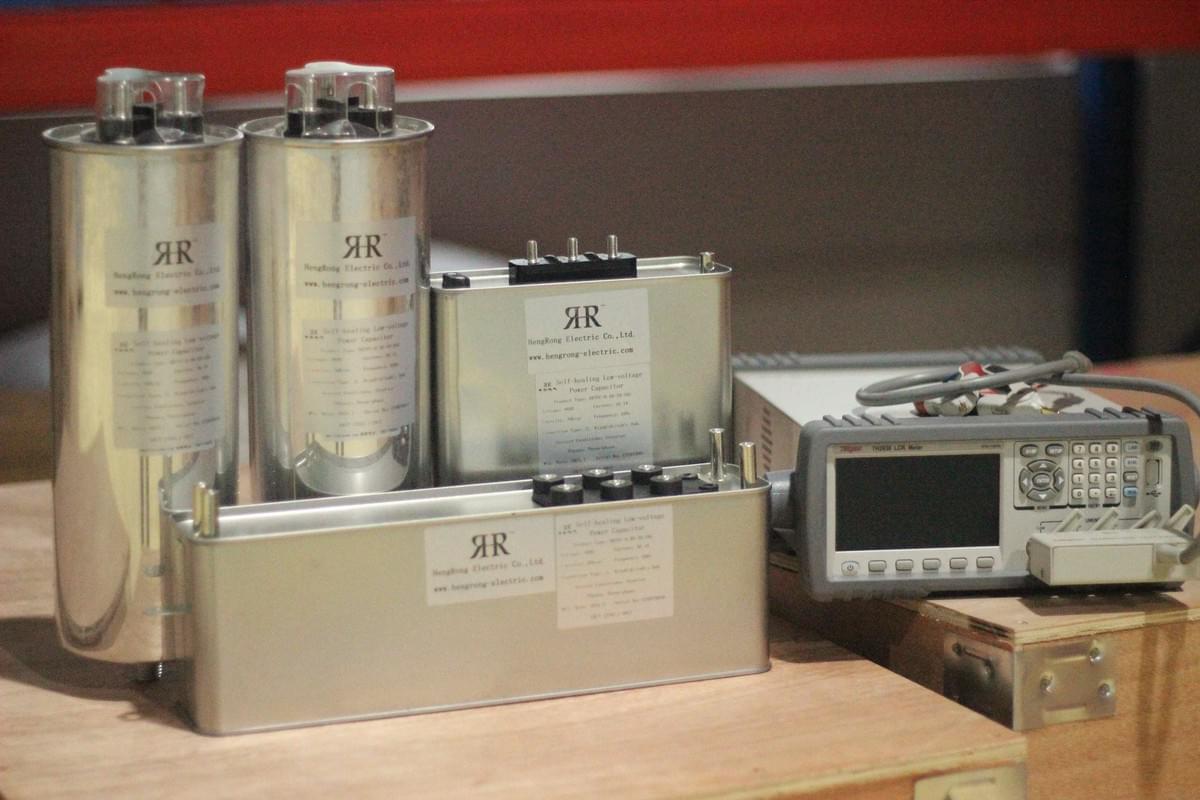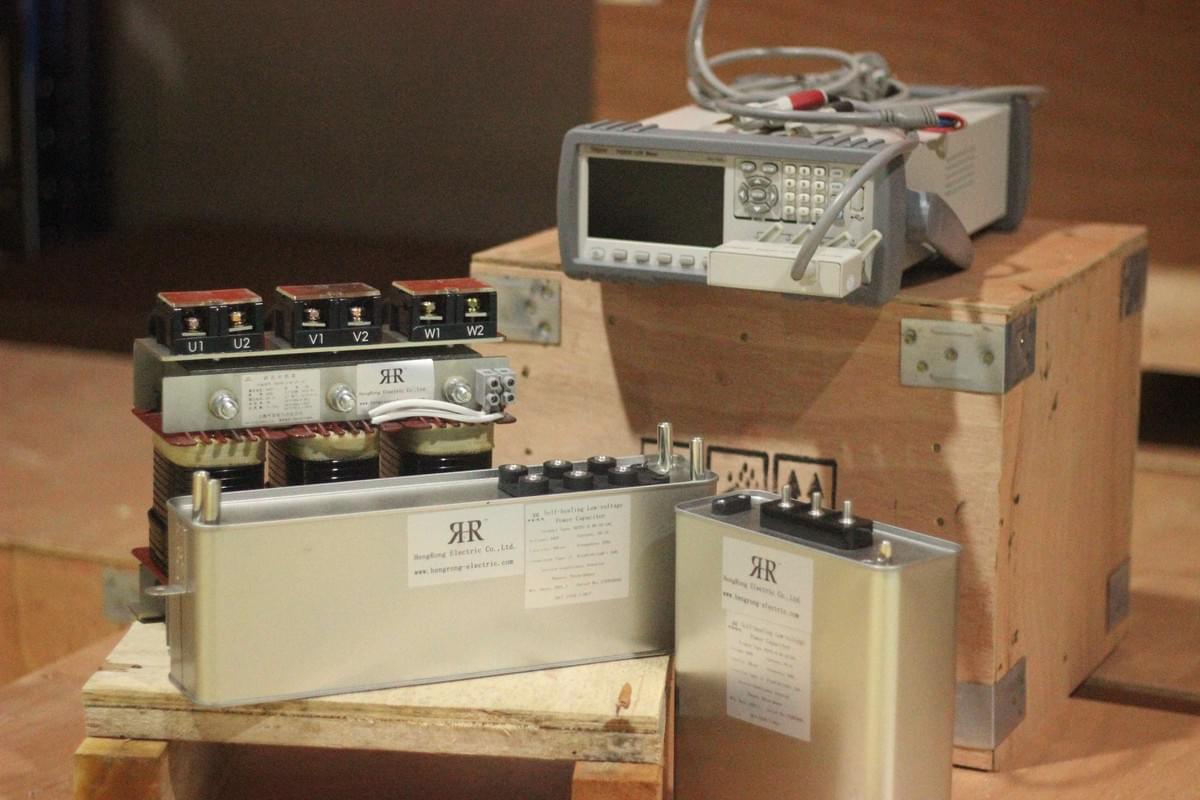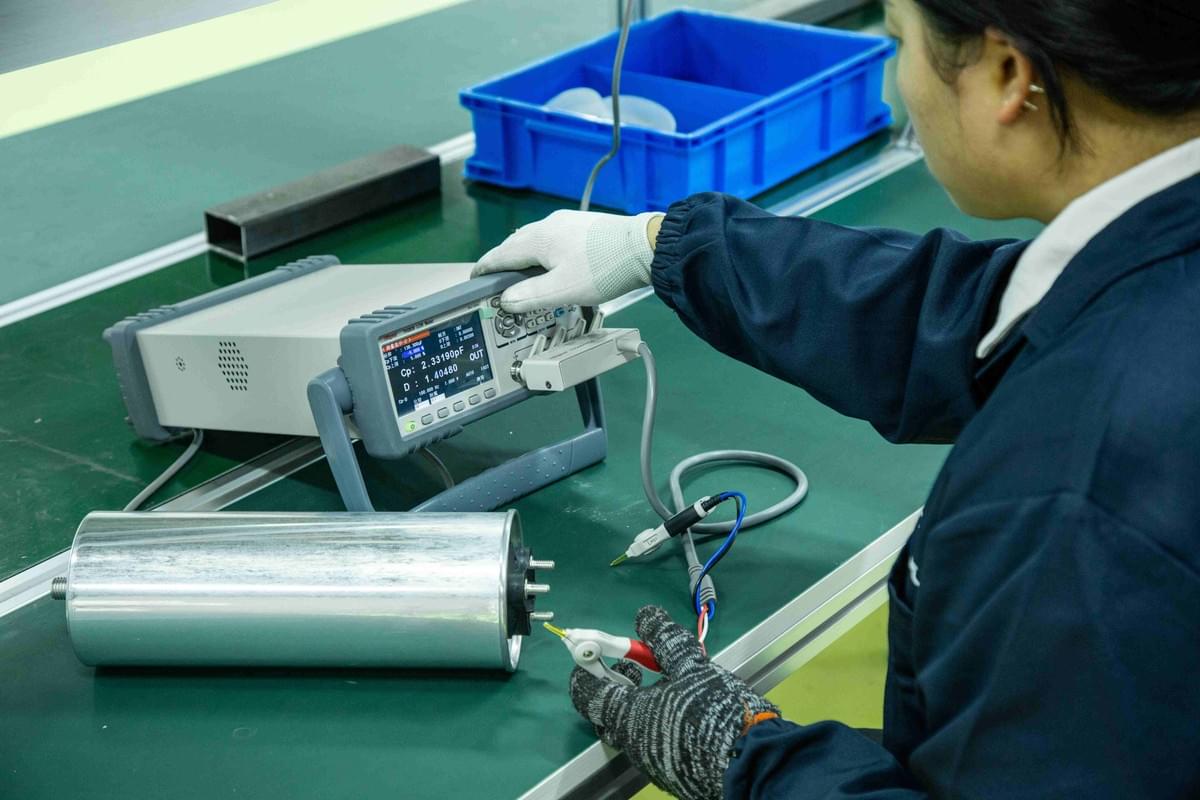In power systems, unbalanced reactive power results in a reduced power factor, increased line losses, and lower equipment utilization. As the core component for reactive power compensation, low-voltage capacitors have become the preferred solution to such issues due to their advantages of low cost, high efficiency, and flexible installation. This article details how to achieve the dual goals of efficient power system operation and enterprise cost savings through scientific capacitor configuration, covering the functions, compensation methods, technical key points, and capacity calculation of reactive power compensation with low-voltage capacitors.

I. Core Value of Reactive Power Compensation with Low-Voltage Capacitors: Four Functions to Optimize Power Systems
By compensating reactive power, low-voltage capacitors significantly improve power systems from four dimensions—equipment utilization, energy consumption, voltage stability, and electricity cost optimization—serving as a key means for enterprises to reduce costs and increase efficiency.
1. Low-Voltage Capacitors Improve Utilization of Power Transformation and Distribution Equipment, Reducing Investment Costs
Low power factor loads occupy a large amount of capacity of power transformation and distribution equipment (such as transformers and distribution cabinets), resulting in "capacity waste". Parallel connection of low-voltage capacitors to compensate reactive current can reduce load current and the required capacity of equipment.
- Core Calculation Logic: The reduced capacity (ΔS) of power transformation and distribution equipment can be derived from the formula: Reduced capacity = Load active power ÷ Power factor before compensation - Load active power ÷ Power factor after compensation. It can also be simplified as (Load active power × (Power factor after compensation - Power factor before compensation)) ÷ (Power factor after compensation × Power factor before compensation).
- Example Effect: Taking a 1000kW load as an example, with the power factor increased from 0.7 (before compensation) to 0.95 (after compensation), the equipment capacity can be reduced by 376kVA according to the above logic. For new projects, this means smaller-capacity transformers and distribution cabinets can be selected to reduce equipment procurement costs; for existing projects, it can reduce basic electricity fee expenditures (in some regions, electricity fees are charged based on equipment capacity), saving over 10,000 RMB annually.
2. Low-Voltage Capacitors Reduce Power Grid Losses and Save Energy Consumption
Power grid losses are proportional to the square of current, and excessive reactive current significantly increases line losses. Low-voltage capacitors reduce total line current by compensating reactive power, fundamentally reducing losses.
- Loss Variation Law: When the load power factor drops from 1 to a certain value (COSφ), the percentage increase in power loss is approximately (1 ÷ (Square of power factor after compensation) - 1) × 100%. For example, if the power factor drops from 1 to 0.8, losses will increase by 56.25%; if the power factor is increased to 0.95 through low-voltage capacitors, losses can be reduced by approximately 31%.
- Application Scenario: A 10kV line in an industrial park supplies power to a factory 2km away. Before compensation, the line loss rate was 8%; after installing two sets of 200kvar low-voltage capacitors, the loss rate dropped to below 5%. Based on an annual power supply of 1 million kWh, the annual electricity savings amount to 30,000 kWh, equivalent to over 20,000 RMB in electricity fee savings.
3. Low-Voltage Capacitors Reduce Line Voltage Drop and Ensure End-Voltage Stability
During peak electricity consumption periods, insufficient reactive power easily leads to voltage drop at the line end (e.g., workshop motors fail to start due to low voltage, and civil appliances shut down frequently). Low-voltage capacitors can supplement reactive power in real time, reduce line current, and minimize voltage loss.
- Practical Case: During the summer peak electricity consumption period of a food processing plant, the workshop voltage often dropped to 190V (national standard requires 220V±7%), causing the refrigeration equipment to shut down. After installing three sets of 150kvar low-voltage capacitors, the voltage stabilized at 210-220V, the equipment failure rate decreased by 40%, and production continuity was significantly improved.
4. Low-Voltage Capacitors Improve Power Factor and Reduce Electricity Expenditures
China's Measures for Adjusting Electricity Fees Based on Power Factor clearly stipulates that different types of users must meet corresponding power factor standards (e.g., high-voltage industrial users ≥ 0.9, agricultural users ≥ 0.8). Fines will be imposed if the standard is not met. Low-voltage capacitors can accurately increase the power factor to the compliance range, even exceeding the standard (e.g., above 0.95), helping enterprises avoid fines and enjoy electricity fee reductions in some regions.
- Fine Comparison: For a 1000kVA industrial user, a fine of 5% of the total electricity fee (over 50,000 RMB annually) is required when the power factor is 0.7; after installing low-voltage capacitors to increase the power factor to 0.95, not only are fines avoided, but also a 1% reduction in electricity fees is enjoyed, saving over 60,000 RMB annually.

II. Three Modes of Reactive Power Compensation with Low-Voltage Capacitors: Select Suitable Solutions on Demand
According to the power supply range and load distribution characteristics, reactive power compensation with low-voltage capacitors is mainly divided into two categories: "centralized compensation" and "local compensation" (local compensation is further subdivided into individual and distributed types). Enterprises need to select based on their own scenarios to maximize compensation effects.
1. Centralized Compensation with Low-Voltage Capacitors: Suitable for Large-Scale and Multi-Load Scenarios
- Installation Method: Configure multiple sets of low-voltage capacitors (usually cabinet-type capacitor banks with a single set capacity of 50-300kvar) on the distribution bus of the low-voltage distribution station to centrally compensate reactive power within the entire power supply range;
- Core Advantages: Convenient management, automatic switching via a unified controller (such as PLC), suitable for scenarios with simultaneous operation of multiple loads (e.g., industrial parks, large shopping malls);
- Application Scenario: In areas with relatively concentrated loads and short lines (≤ 500 meters), for example, an industrial park distribution station installed four sets of 200kvar low-voltage capacitors, covering 10 small and medium-sized factories, and the overall power factor was increased to above 0.92.
2. Local Compensation with Low-Voltage Capacitors: Preferred for Single-Load and Long-Distance Scenarios
Local compensation is divided into "individual local compensation" and "distributed local compensation", both of which install low-voltage capacitors near the load to reduce transmission losses of reactive current in the line:
- Individual Local Compensation: Install low-voltage capacitors directly next to a single high-power device (e.g., motors above 50kW, pump station water pumps), and supply power in parallel with the device to locally compensate the reactive power of the device;
- Distributed Local Compensation: Install low-voltage capacitors in the power box bus or local low-voltage distribution circuit to compensate the total reactive power demand of multiple low-power devices in the circuit;
- Application Scenario: Rural irrigation stations (line length 1-3km), large workshop motors (e.g., 100kW compressors). For example, after installing one 80kvar low-voltage capacitor for a farmland irrigation pump, the line loss was reduced by 35%, the irrigation efficiency was increased by 20%, and there was no need to wait for off-peak electricity consumption to start the device.
III. Technical Key Points of Reactive Power Compensation with Low-Voltage Capacitors: Avoid Risks and Ensure Stability
During the application of low-voltage capacitors, three key issues—"inrush current prevention, harmonic amplification prevention, and self-excitation prevention"—must be focused on to avoid equipment damage or system failures and ensure the safe and reliable operation of the compensation system.
1. Inrush Current Prevention for Low-Voltage Capacitors: Avoid Equipment Damage
When low-voltage capacitors are connected to the power grid, an inrush current with a peak value 5-10 times the rated current is likely to occur, which may break down the capacitor insulation layer or burn out the contactor.
- Solutions:
- Select low-voltage capacitors with current-limiting resistors, or connect current-limiting reactors in series in the input circuit to reduce the inrush current peak;
- Adopt delayed switching technology to avoid simultaneous switching of multiple capacitors (interval time ≥ 30 seconds);
- Inrush Current Reference: The magnitude of inrush current is related to the short-circuit power at the installation site and capacitor capacity. During design, ensure the inrush current peak ≤ 5 times the rated current.
2. Harmonic Amplification Prevention for Low-Voltage Capacitors: Ensure System Stability
Low-voltage capacitors and line inductors form an LC circuit. If harmonics (such as 3rd, 5th, and 7th order) exist in the power grid, resonance is likely to occur, leading to harmonic amplification, capacitor overheating, and abnormal voltage rise.
- Solutions:
- Connect reactors with a certain inductive reactance value in series in the low-voltage capacitor circuit (select based on harmonic conditions: 12% inductive reactance for high 3rd order harmonics, 4.5% inductive reactance for high 5th order harmonics, and 0.5% inductive reactance for low harmonics);
- Install harmonic detectors to monitor the harmonic content of the power grid in real time. If the total harmonic distortion rate > 5%, it is necessary to use active power filters in conjunction.
3. Self-Excitation Prevention for Low-Voltage Capacitors: Protect Motor Insulation
If the capacity of low-voltage capacitors is too large, it will cause the motor to generate self-excitation voltage when shut down, leading the motor to enter a power generation state and damaging the equipment insulation.
- Solutions:
- The compensation capacity must be less than the motor no-load capacity, usually taking 0.9 times the motor no-load capacity. The calculation logic is: Compensation capacitor capacity = 0.9 × 3 × System voltage × Motor no-load current;
- For example, a 10kW motor has a no-load current of 5A and a system voltage of 380V. According to the above logic, the applicable low-voltage capacitor capacity is approximately 5kvar to avoid self-excitation caused by excessive capacity.

IV. Capacity Calculation and Switching Control of Low-Voltage Capacitor Compensation: Accurately Matching Requirements
Scientifically determining the capacity of low-voltage capacitors and selecting an appropriate switching control method are key to ensuring compensation effects. Strict calculations based on load parameters are required to avoid "over-compensation" or "under-compensation".
1. Capacity Calculation of Low-Voltage Capacitor Compensation: Accurate Calculation Based on Power Factor Targets
- Core Logic: Required low-voltage capacitor capacity = Load active power × (Tangent value of power factor before compensation - Tangent value of target power factor after compensation);
- Calculation Example: For a workshop with a load active power of 800kW, the power factor before compensation is 0.7 (tangent value ≈ 1.02), and the target power factor after compensation is 0.95 (tangent value ≈ 0.33). The required capacitor capacity = 800 × (1.02 - 0.33) = 552kvar. In practice, six sets of 100kvar low-voltage capacitors (total capacity 600kvar) can be selected to reserve a small amount of margin to cope with load fluctuations.
2. Switching Control Modes of Low-Voltage Capacitors: Selection Based on Load Stability
- Manual Switching: Suitable for scenarios with stable loads and low usage frequency (e.g., small workshop motors). Low-voltage capacitors are switched manually via switches, with low cost;
- Automatic Switching: Suitable for scenarios with large load fluctuations and continuous operation (e.g., shopping malls, chemical plants). PLC or dedicated controllers are used to automatically switch capacitor banks based on power factor (e.g., switch on when the power factor is below 0.9, and switch off when it is above 0.95) to avoid over-compensation;
- Selection Principle: When the compensation effects of high-voltage and low-voltage are the same, priority should be given to low-voltage automatic switching equipment, which can not only reduce control costs but also reduce losses of high-voltage side equipment.
V. Conclusion: Low-Voltage Capacitors—An Economical Choice for Power System Optimization
Against the backdrop of growing power demand and increasing energy-saving requirements, reactive power compensation with low-voltage capacitors has become a core means for enterprises to optimize power systems, relying on the three-fold advantages of "improving efficiency, reducing losses, and saving costs". Whether in industrial production, commercial operations, or agricultural irrigation, the value of low-voltage capacitors can be fully exerted by scientifically selecting compensation methods, accurately calculating capacity, and avoiding technical risks, achieving the dual goals of stable power supply system operation and improved economic benefits.

If your enterprise is facing issues such as substandard power factor, high electricity fees, or difficulty in equipment startup, please feel free to leave a message specifying the load type (e.g., motor power, power supply line length) and current power factor. Hengrong Electric CO., LTD. will customize an exclusive reactive power compensation solution with low-voltage capacitors for you to help your enterprise reduce costs and increase efficiency!
